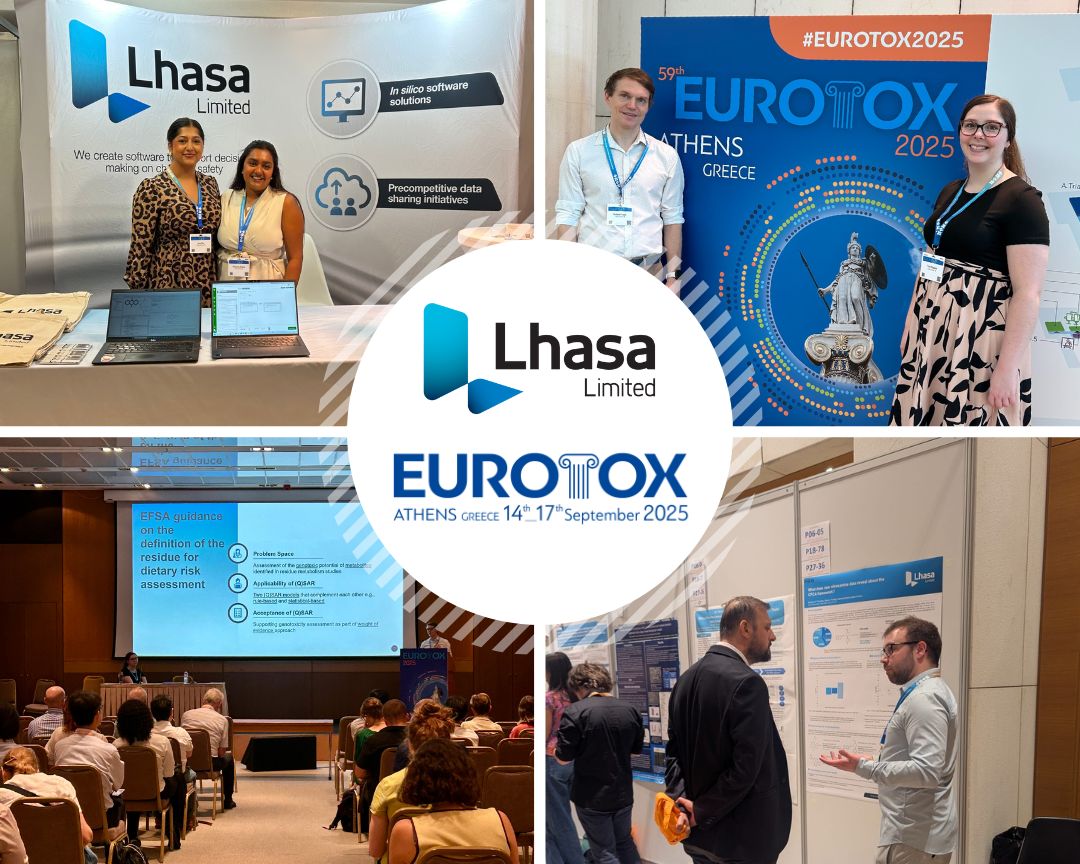Do you need a transparent, scientifically robust, and reproducible weight-of-evidence approach for assessing for carcinogenicity? Then this scientific publication is for you.
We are excited to share “Structuring Expert Review Using AOPs: Enabling Robust Weight-of-Evidence Assessments for Carcinogenicity Under ICH S1B(R1)”, which has been published in Computational Toxicology, as part of our Lhasa special issue, “Computational approaches to support better human risk assessments on chemical safety”. The paper describes how an adverse outcome pathway framework can support the organisation, contextualisation, and rationalisation of evidence in conjunction with expert review, for improved carcinogenicity weight-of-evidence assessments.
“It is exciting to see the publication of our work, demonstrating how our in silico solution Kaptis, combined with expert review, improves decision-making in identifying whether a 2-year rat carcinogenicity study would add value, under the revised ICH S1B(R1) guidance” – Susanne Stalford, PhD – Lead author and Principal Scientist at Lhasa.
Using non-animal studies to assess chemical safety in humans
Non-animal studies, or new approach methodologies (NAMs), are increasingly accepted for human chemical safety assessment. Keeping up with scientific advancements, regulatory guidelines are being updated to allow for weight-of-evidence (WoE) assessments, subsequently reducing the reliance on animal assays.
An example of this is the pharmaceutical guideline ICH S1B(R1), which was updated in 2022. The guideline now allows for the use of a weight-of-evidence assessment to determine if there is sufficient evidence to avoid conducting a 2-year rat carcinogenicity assay, when the conclusion is that the assay is unlikely to add value to the overall drug safety assessment.
As a pharmaceutical guideline, we know that this topic is of interest to many of our members, who are developing new pharmaceutical products for the benefit of human health.
Don’t be crushed by the weight of evidence…
The challenge in this approach lies in interpreting the volume of data generated within a weight-of-evidence assessment. When it comes to ICH S1, the evidence is organised across six factors – helping to break the problem down into manageable elements.
To support this weight-of-evidence challenge, we have created an approach which is utilised in Kaptis, an in silico solution that organises and contextualises knowledge, alongside providing an outcome based on available data. Our approach combines adverse outcome pathways (AOPs) – which you will know about if you read our previous blog, Meeting ICH S1 and reducing animal testing through AOPs – alongside reasoning.
Demonstrating ICH S1B safety assessment success
Within this innovative paper, three examples are retrospectively analysed, one of which is a compound from the ICH S1B(R1) Addendum. This work illustrates how AOPs can be used to draw consistent and scientifically robust conclusions in different scenarios, associated with varying levels of available evidence. Specifically, these case studies showcase how:
- When used for ICH S1, our approach can support and strengthen decisions on the value of a rat carcinogenicity study, in relation to the overall preclinical safety toxicology assessment.
- Providing access to knowledge and establishing best practice approaches for decision-making will support safe human protective decisions, whilst reducing the use of animals for carcinogenicity assessment.
“The case studies detailed within the paper show the value Kaptis brings to weight-of-evidence assessments, enabling scientifically robust, transparent and consistent outcomes. This forms the basis of a best practice for ICH S1B(R1), which will align industry and regulators when making regulatory decisions for pharmaceuticals.” – Susanne Stalford, PhD – Lead author and Principal Scientist at Lhasa.
Find out more
Read the full paper “Structuring Expert Review Using AOPs: Enabling Robust Weight-of-Evidence Assessments for Carcinogenicity Under ICH S1B(R1)“, to:
- Access the results of the three case study examples.
- Understand how our transparent and integrated AOP approach supports weight-of-evidence assessments, in relation to ICH S1B(R1).
- Learn how you could more quickly reach human safety decisions, whilst reducing the use of time-consuming and costly carcinogenicity animal testing.
If you would like more information about Kaptis, please get in touch.
Access the publication for free until 14th August 2024.
Last Updated on November 12, 2024 by lhasalimited



